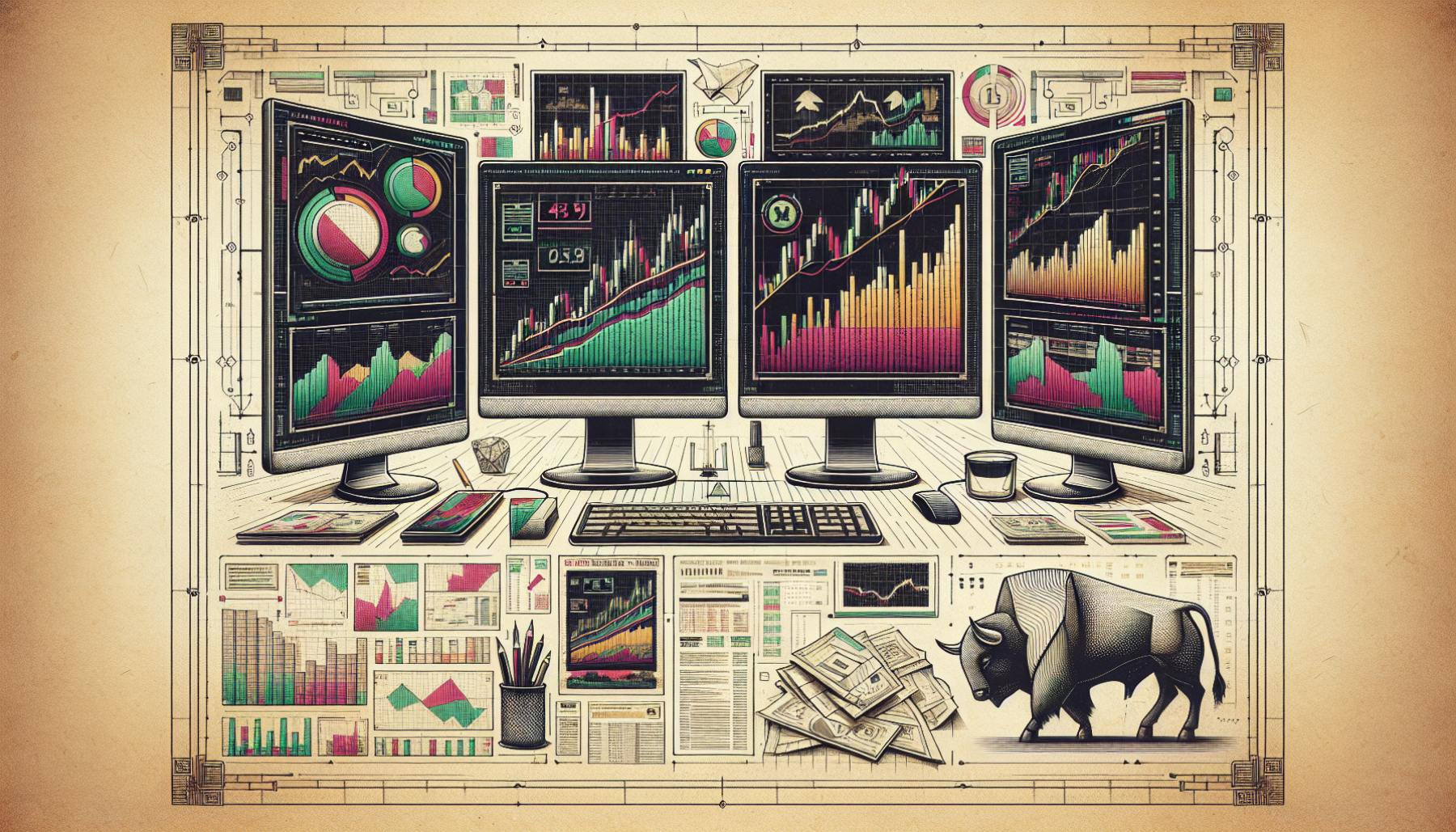Online trading has revolutionized the financial markets, offering investors and traders unparalleled access to various asset classes. These assets may include stocks, cryptocurrencies and Contracts for Differences that can be traded through platforms that may serve for example as a CFD broker Australia related or similar trading platforms.
While online trading offers several advantages over traditional trading methods, it is not without its drawbacks. In this article, we will look at the pros and cons of both online and traditional trading to help you understand which approach might suit your investment style and goals better.
Pros of Online Trading
- Accessibility: Online trading platforms are accessible 24/7, allowing traders to execute trades at any time, which is particularly beneficial for those dealing with international markets across different time zones.
- Reduced Costs: One of the most significant advantages of online trading is the reduction in transaction fees and commissions. The cost of executing trades online is typically lower than through a traditional brokerage.
- Real-Time Trading: Traders can benefit from real-time market prices and instant trade execution, enabling immediate reactions to market-moving news and events.
- Greater Control: Investors have greater autonomy and control over their investments, as they can directly place trades without needing to communicate with a broker.
- Advanced Tools: There are many analytical tools and resources that are readily available on online platforms, allowing for in-depth market analysis and informed decision-making.
Cons of Online Trading
- Risk of Overtrading: The ease and speed of online trading can lead to overtrading, as traders may get tempted to make impulsive decisions without thorough analysis.
- Security Concerns: Despite advanced security protocols, online trading platforms can be vulnerable to hacking and cyber attacks, posing a risk to investors’ funds and information.
- Lack of Personal Advice: Unlike traditional trading, online platforms typically do not offer personalized investment advice or guidance from experienced brokers.
- Technical Issues: Traders are dependent on their internet connection and the reliability of their devices; any technical issues can potentially result in trade delays or losses.
- Emotional Trading: Without the buffer that a traditional broker may provide, there’s a higher risk of emotional trading, which can lead to irrational decisions and losses.
Pros of Traditional Trading
- Personalized Service: Traders can benefit from the personalized advice and tailored service of experienced brokers, which can be invaluable for those less familiar with the markets.
- Professional Oversight: Having a seasoned broker handle trades can prevent snap decisions based on emotions, as they can offer a more thoughtful approach to investing.
- Relationship Building: Traditional trading often involves building long-term relationships with a broker, which can lead to a deeper understanding of an investor’s goals and risk tolerance.
Cons of Traditional Trading
- Higher Costs: Traditional brokerages typically charge higher fees and commissions, which can eat into the profits of investors.
- Less Convenience: Physical visits to a broker or making trades over the phone can be less convenient and more time-consuming compared to online trading.
- Slower Execution: Trade execution can be slower, as it requires communication between the investor and the broker, potentially leading to missed opportunities.
What’s the take?
Both online trading and traditional trading have their distinct pros and cons. As an investor or trader, it is important to weigh these factors against your own financial goals, experience level, and risk tolerance. Whether you choose the cutting-edge technology and independence of online trading or the personalized advice and experience of a traditional broker, the right choice will depend on your individual needs and the level of involvement you wish to have in managing your investments.
How trading has transformed in the digital age
Trading has undergone a dramatic transformation from bustling trading floors to the quiet clicks of a mouse in a cozy home office. Today, a CFD broker can offer services without ever meeting you face-to-face. Gone are the days when being a trader meant shouting over the din of a crowded exchange. Instead, traders can now navigate global markets with ease, thanks to the accessibility and sophistication of online platforms.
The digitalization of trading has democratized the participation of individual investors in the markets. Online platforms have streamlined processes, reducing the reliance on middlemen and bringing greater transparency to trades. Advanced analytics now guide trading decisions, with vast amounts of data crunched in the blink of an eye to spot potential investments — something that simply wasn’t possible in the confines of traditional trading environments.
Why online platforms are taking the lead
The allure of online trading platforms is undeniable. They provide an unparalleled level of convenience, allowing individuals to manage their investments in no matter where they are and any time of their choosing. With advances in technology removing need to be tethered to a particular location or trading floor, opportunities to trade currencies, commodities, and indices are now just a few clicks away, breaking down barriers that once made trading exclusive and cumbersome.
The integration of social trading into online platforms has opened up new avenues for new traders to learn and grow. They can now follow the trades of more experienced investors, gaining insights and building confidence as they navigate the complexities of the market. This community aspect of online trading has established a new culture where knowledge and strategies are shared openly, promoting an environment of collective growth and advancement.
The undeniable appeal of instant transactions
The ability to execute trades within seconds is the reality of online trading. Speed is of the essence in the fast-paced world of finance, and digital platforms give you that competitive edge. Not only can you respond to market fluctuations almost instantly, but you also have access to real-time data and the ability to automate trades. This immediacy can often be the difference between capitalizing on an opportunity and missing it entirely.
The technological infrastructure supporting online trading has seen significant advancements in recent years. The use of high-frequency trading algorithms and sophisticated predictive models has increased the capabilities of traders to make more informed decisions in a fraction of the time. This has greatly expanded the potential for profit, as well as the complexity of the trading environment, creating a compelling dynamic that attracts tech-savvy investors.
The flip side: Challenges in the virtual trading world
But it’s not all smooth-sailing. In this digital trading era, self-discipline becomes tremendously important. Without the structured environment of a trading floor or the guidance of seasoned brokers, it’s easy to fall prey to impulsive decisions. Add to that the complexities of cybersecurity, where protecting your investments also means safeguarding your personal information in a space that’s constantly under threat.
Additionally, the online trading landscape is ever-evolving with regulatory challenges that traders need to keep abreast of. Regulations are put in place to protect consumers, but they also add layers of complexity that require a good understanding of compliance. The onus is on the individual trader to stay informed and operate within the legal confines of their trading platform and jurisdiction.
Keeping the human element in the traditional trading
On the flip side, traditional trading methods offer a personal touch that some investors find reassuring. Dealing with a broker face-to-face can instill a sense of trust and ensure personalized advice. For some, this relationship is vital and becomes a cornerstone of their investment strategy, guiding them through the convolutions of the market with a human perspective that’s often lacking in an algorithm.
Contending with the constraints of conventional trading
However, as we have seen earlier, the traditional approach is not without its limitations. Physical trading floors operate within set hours, restricting the ability to trade instantaneously based on real-time global developments. Geographical constraints play a role too — living in Australia means you’re in a different time zone from New York or London, which can be a significant hurdle in seizing investment opportunities when markets are most active elsewhere.
And while traditional trading methods are often seen as less efficient, they also provide fail-safes against the rapid dissemination of misinformation that can occur through online channels. Rumors and unverified news can spread like wildfire in the digital realm, leading to knee-jerk reactions and market volatility that wouldn’t be as easily propagated within the slower-moving traditional systems.
Finding balance in a modern trading strategy
So, what’s the best course of action for a trader? Incorporating both online and traditional trading elements may offer a balanced approach. You can enjoy the convenience and tools that online platforms provide while still maintaining a relationship with a traditional broker for insights and deeper market understanding. Ultimately, it’s about creating a portfolio that leverages the unique benefits of each method to navigate the complexities of the market with confidence.
A modern trading strategy that embraces both worlds requires not just flexibility, but also a keen understanding of individual investment goals. Each investor must weigh the need for speed and convenience against the desire for a more thoughtful, deliberate approach to trading. It is the thoughtful consideration of these factors that can inform the right balance and strategic mix of online and traditional methods tailored to each investor’s unique situation.
Integrated approaches to managing risks
In an era where technology reigns supreme, blending the new with the old can enhance market strategies. For example, using an online platform for quick trades while leveraging a traditional broker’s expertise for long-term investments can be a prudent way of managing your risks. This integrated approach allows you to benefit from the quick decision-making capabilities offered by technology and the nuanced, comprehensive guidance a personal broker can provide.
Embracing online and traditional trading in synergy
Ultimately, whether you’re perched in front of a computer screen or walking into a broker’s office, the goal remains the same — to make informed, profitable investment decisions. It’s clear that both online and traditional trading have their distinct advantages and challenges. As an investor, understanding these nuances and leveraging them to your benefit is key. And remember, in this rapidly evolving landscape, flexibility and the willingness to adapt could very well be your greatest assets.

